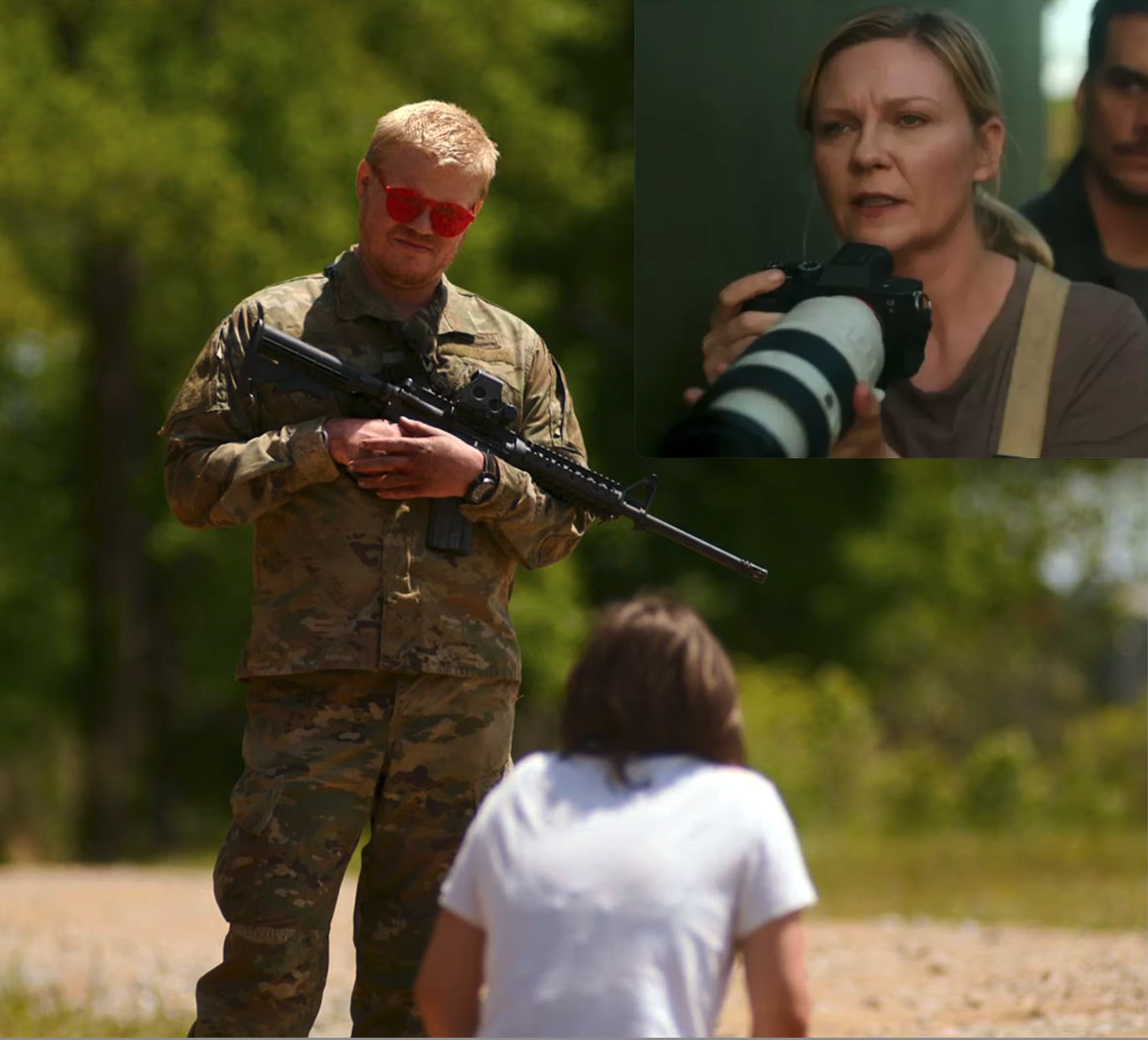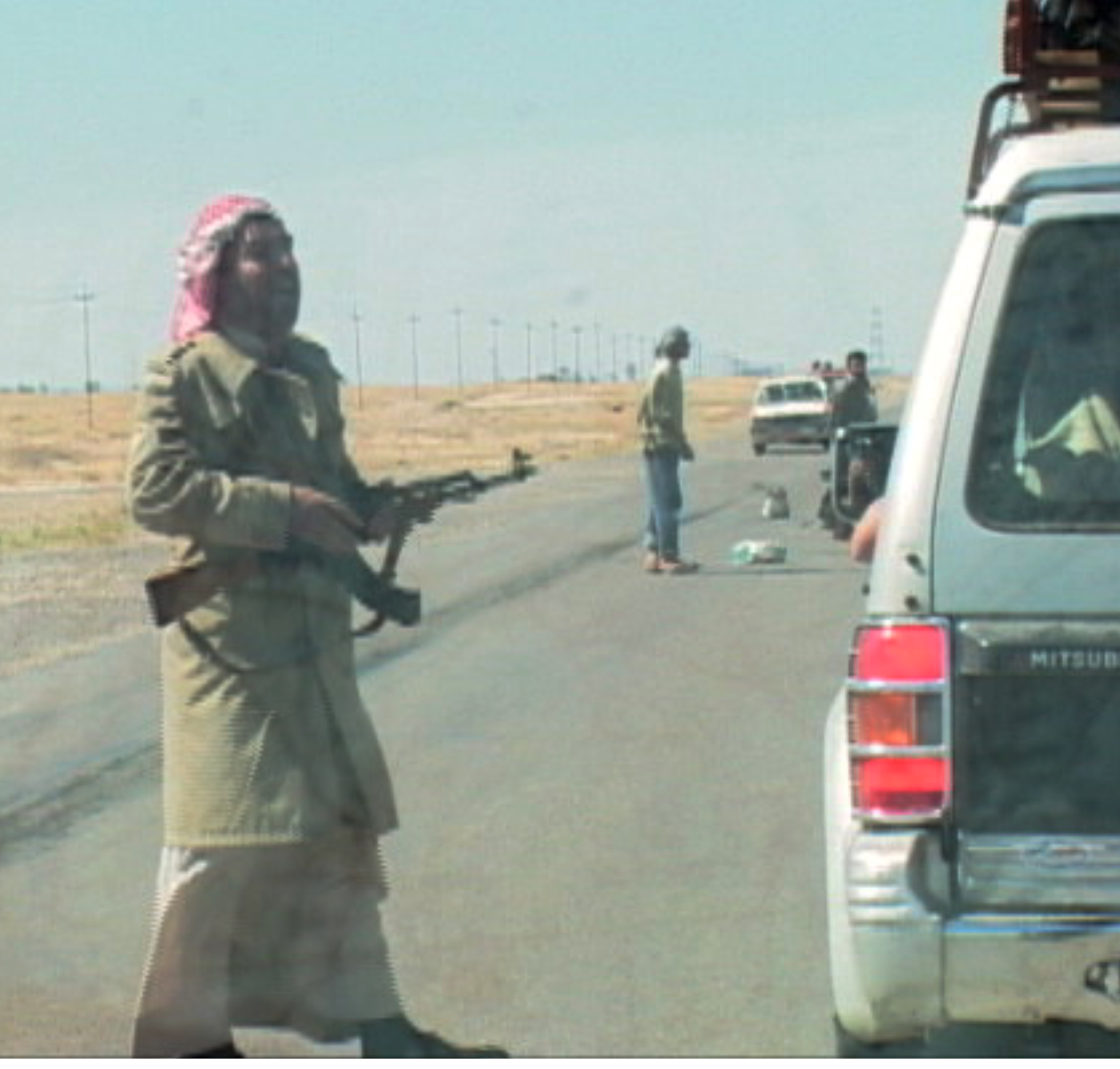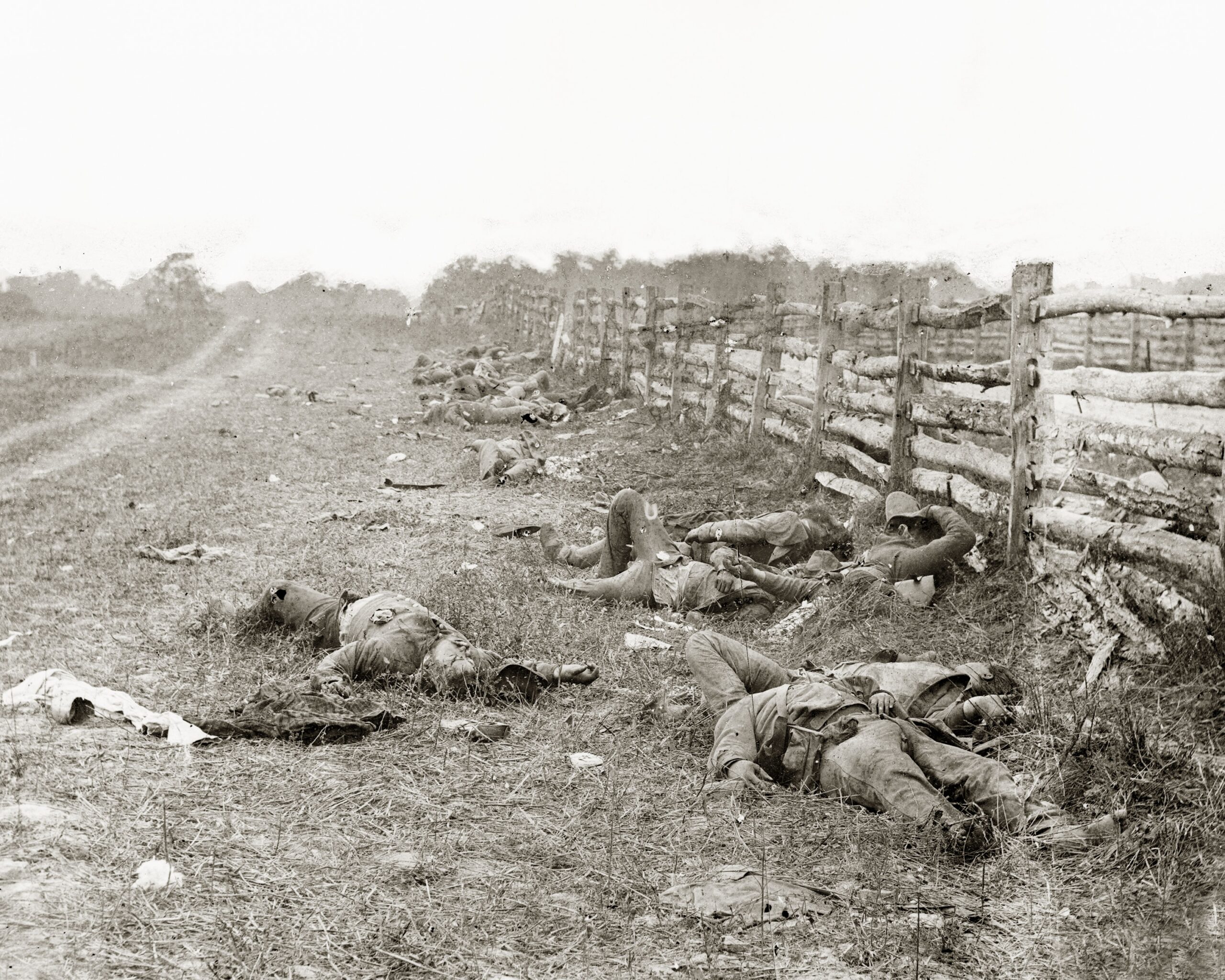A lot of us set aside our fears about America’s very real and violent political divisions long enough to watch a fictionalized version of them on the big screen recently.
So many, in fact, that in its opening A24 Studio’s Civil War hammered the cinema box office the same way its fictitious Western Forces hammered Washington and the White House, earning more than $25 million and taking no prisoners.
Most surprising to me, however, was that writer/director Alex Garland put journalists at the film’s core. Intrepid war correspondents documenting their own nation’s disintegration.
After all, it was just a few short years ago when a U.S. president was daily deriding us as “the enemy of the people,” and a Gallup poll then recorded the lowest levels of media trust in America ever — at just 32-percent. During those dark days, things looked pretty dismal for the Fourth Estate.
But Garland, a Brit, chose to ignore all that in Civil War by making us Hollywood heroes again, albeit, imperfect ones, in the mold of the protagonists from Peter Weir’s, The Year of Living Dangerously (1982) and Oliver Stone’s Salvador (1986) in which the reporters’ relentless drive to get the story was as much about ego as the truth.
Yet in this unsettling post-truth era, even the slightest nod toward journalism’s more noble purpose is cause to briefly bask in the beacon of hope it provides.
And while keeping in mind that no entertainment medium usually gets a profession completely right, both the accurate and troubling depictions of journalists and journalism in Civil War provide me with a worthy excuse for examining just how one niche, war reporting, actually works.
What Civil War got RIGHT:
- Our motivations.
Journalists go to war (primarily) for the same reason soldiers do: to test ourselves. We want to know how we’ll react under fire. Will we hold steady and do the job, or run? The lofty ideals are there too, you know, the pursuit of truth and all that ‘comforting the afflicted and afflicting the comfortable’ business but stuffed in the bottom of our knapsacks until we need them.
In the film Kirsten Dunst’s ‘Lee Smith’ is worthy of her young protegee’s adoration not because she dutifully reported city council meetings, but because the street cred she earned from, ‘that photo of the Antifa massacre.’
- Imagery Trumps Words.
Two of the most celebrated images to come out of the Vietnam War included Saigon Execution when photographer Eddie Adams captured the moment a bullet leapt from the revolver fired by a South Vietnamese general into the head of a captured Viet Cong guerrilla and Napalm Girl in which Nick Ut clicked on a naked and screaming 9-year-old burned by a chemical air strike.
Both won Pulitzer Prizes. Few could tell you beyond the surface, the stories they depict. Garland’s entire film was and ode to image over context, the most violent scenes (especially the now infamous ending) stopped and popped into black and white freeze frames for us to hold emotionally rather than contemplate any larger meaning.
- War’s Violence Seduces Us.
There’s a paradox that journalists rarely talk about. It’s this: war reporting (aside from the risk) is some of the easiest reporting there is. If you just focus on the violence. Violence is the low-hanging fruit of conflict, inherently dramatic, fairly easy to capture, interesting without context (see above).
Combat or, in the vernacular of war correspondence, ‘bang bang’ is the currency of all conflict coverage. Any time I reported on a firefight, no matter how small, it made news. Audiences want it, our editors want it, deep down we want it too. But the ugly, sad, and indisputable truth is that combat is the smallest part of any war, sometimes the rarest. Civilian destruction and civilian deaths, euphemistically termed, “collateral damage,” is war’s most defining feature.
In Civil War Lee and the other journalists swarmed to the guns, proverbial moths to the flame, but never once pointed a camera or notepad at a civilian—even though non-combatants are essential, even paramount to understanding the story of any war (see also, What Civil War got wrong).
Journos Die for the Job.
For me, and many others I suspect, the most powerful and triggering scene in Civil War featured Oscar nominated actor Jessie Plemmons as a militiaman executing one of the journalists who gave the apparent wrong answer to his question, ‘Where are you from, originally.’ (Asked after the now trailer-famous quote, ‘What kind of Americans?’).

Courtesy of A24 Studios
In 2003, during the U.S. invasion of Iraq, I and three other members of my CNN team were captured just outside Tikrit by fedayeen militia loyal to Saddam Hussein. We were forced on our knees, the execution position, just like the journalists in the film and felt the muzzles of their AK-47’s pressed into the hollow notches below the backs of our skulls. We waited for the triggers to be pulled, imagined our bodies slumping forward on the roadside, and our families never finding out what happened to us.
All of which would’ve happened had it not been for our Kurdish translator Tofiq, who even in that seemingly powerless state revealed the lion in his heart, demanding, and eventually securing our release.

Member of Saddam Hussein’s Fedayeen militia who captured us outside Tikrit, Iraq (2003).
While we survived that war zone, thanks to Tofiq, many other colleagues have not. Journalists die violently and too often in the line of duty: James Foley beheaded by ISIS, Dan Eldon torn apart by an angry mob, Marie Colvin crushed in an airstrike, Shireen Abu Akleh shot by a government soldier while wearing blue body armor clearly marked PRESS.
Reporters without Borders says 103 journalists have been killed in the last five months alone during Israel’s war in Gaza. Another, 15 killed since the start of Russian’s invasion of Ukraine, according to the Committee to Protect Journalists (CPJ). Additionally, CPJ reports show that more than 1500 have died since 1992 to the present while in commission of their journalistic duties. And when we’re not dying, journalists often suffer from PTSD, moral injury, and other mental health corrupting occupational hazards of conflict reporting. In Civil War, Lee Smith’s alternating hardness and empty thousand-yard stares is an accurate bioproduct of what she’s witnessed or — what she’s done or failed to do in war.
- Beauty Can Co-exist with Destruction.
War feeds false dichotomies, proffering heroes and villains leading to easy conclusions of romantic mythology or world ending apocalypse. In reality, it’s filled with nuance. Garland gets this right in a film scene in which the journalists are framed by the car windows reflecting the glowing sparks and ash of a burning forest. There were many instances when surreal beauty like this reached across the chasm of war and forced me to re-order my observations.

Afghan father with photo of daughter killed in an airstrike (outside Kabul, Afghanistan 2001).
I often think of one from the early days of the war in Afghanistan. I interviewed an Afghan man outside of Kabul whose five-year old daughter had been killed by an American airstrike intended for the Taliban. He pushed a photograph toward me depicting his little girl with big dark eyes, a sprout of hair held on the top of her head by elastic band looped around a pink plastic ball. She looked into the lens with curiosity and a kind of indescribable brightness that forced me to see her humanity, not just the tragedy of her absence. Like the film’s sparks, the photo felt to me like a flower sprouting from the ruins.
- Women are often Superior War Correspondents.
Martha Gellhorn, Marie Colvin, Lee Miller, Christiane Amanpour. So many women who have often done the job better than men, willing to see beyond the ‘bang bang’ and cover conflict’s full dimensions. Not just the fighters — but the families, victims of sexual violence, child soldiers and everything in-between.
What Civil War got WRONG:
- Ignoring War Crimes.
Intellectually I’m puzzled by the idea of war crimes. (Can you seriously impose rules on a situation in which you’re already using deadly violence to solve your dispute?) Emotionally, though, I’m comforted by the human audacity of establishing laws for warfare like the Geneva Conventions. Journalistically, I’m certain, it is mine and every other journalists’ job to report on their violation.
So, I cringed in my seat watching the film’s montage of Hawaiian-shirted guerrillas gleefully gunning down their captured prisoners—while the movie journalists paid no attention, or even joked with the perpetrators, as Joel (Wagner Moura) did, like they were friends instead of combatants committing murder. Moura is a terrific actor. (see Narcos El Chapo. But portrayed the most inept and unhinged wire reporter I’ve witnessed on film–never once did he take a single note nor do a real interview. He spent his time instead, sexually creeping on the young, newbie reporter Jessie, and drinking himself until distraught and useless.)
We must cover everything that happens in front of us, good or bad, because that’s the job. Loyalty to the truth has to rise above all else, including nationalism.
My own resolve on this was tested in 2004 during the Second Battle of Fallujah. Then a U.S. marine executed at point-blank range, a wounded, unarmed insurgent in front of me. My videotape of the incident set off a shit storm of vitriol that, twenty years later, sometimes still rears its ugly head. I received thousands of emails from Americans calling me a traitor (including grandmothers and clergy) wishing me a slow and painful death or threatening to end me themselves. It took an enormous toll to fulfill my duty to the truth and the obligations to my profession. But I would do it again in heartbeat, because on the hardest day, that’s the job and why it’s a noble profession worthy of respect. There is personal costs to doing it—if you’re doing it right.
- Ignoring Civilians/Non-combatants.
In real life war reporting we don’t ignore civilians or non-combatants as the journalists in the film did (even while they overnighted in a refugee camp). Civilian suffering, death and disruption of lives is the real story of war, despite our obsession with ‘bang bang.’
In fact, when we turn our attention and cameras away from the guns and toward the civilian cost of conflict we often end up with war’s most powerful and enduring stories and images.
A most recent example is the 2024 World Press Photo of the Year award earned by Reuters photographer Mohammed Salem who captured an image of a Palestinian woman cradling the dead body of her five-year-old niece on the Gaza Strip. While neither of their faces are visible in the photograph, the aunt, bent in grief and hand against pressed against the child’s shroud-covered head, speaks volumes.
- Foreign Correspondent Attitude, But Domestic War.
It’s a bit of a stereotype (perhaps more accurate prior to digital technology and the 24-hour news cycle) that foreign correspondents parachuting into overseas conflicts spend their down time away from the frontlines drinking, carousing, and screwing.
With the ability to leave anytime and little at stake, many were uninvested or even cavalier about the people and events caught up in the conflicts they covered. Not so for local interpreters and journalists. They have very real skin in the game, especially the outcome. So it was disconcerting to see the journos in Garland’s film glib and carrying on like traditional foreign correspondents while they were actually reporting the violent unravelling of their own world and way of life.
- Minor, but still irritating.
>In today’s 24-hour news cycle, no one can afford the time and effort to shoot film like Civil War’s newbie shooter, Jessie (played by Cailee Spaeny). Digital imagery is king.
>Being credentialed press/media offers no protection in war—and can even single you out for targeting.
- Closing Thoughts:
The real American Civil War, the one that actually happened more the 160 years ago, showcased some of the most remarkable war reporting even to this day, thanks to the advent of photography.
Though it had been used during the Crimean War a decade early it was more widely used in documenting the U.S. conflict. Matthew Brady gets most of the credit and is even considered the father of photojournalism, but it was photographers working for him, primarily Alex Gardner, that captured the most arresting post-battlefield images. Like the unforgettable bodies littering the fields after the single most bloody day in America history, The Battle of Antietam (1862) when 23,000 soldiers were killed, wounded, or missing.

Alexander Gardner’s photograph of Confederate war dead following the Battle of Antietam (1862).
And it was precisely because photographic technology was so primitive and slow, known as the collodion process in which bulky cameras were used to expose coated glass, that those images derived their harrowing power.
Action shots were impossible then since the process required long exposures and any movement would blur the image. The answer for shooters like Gardner in documenting the conflict was to photograph the dead. Instead of focusing on the mesmerizing but often empty bang bang, as we do today, Gardner concentrated on the battle’s aftermath. And those contorted and lifeless bodies forced us to contemplate war’s cost rather than its seductive drama.
Turning our cameras on casualties is exceedingly rare in modern day conflict coverage, but perhaps the most difficult and important contribution we as journalists can make in reporting war. Showing what actually happens.
-END-
